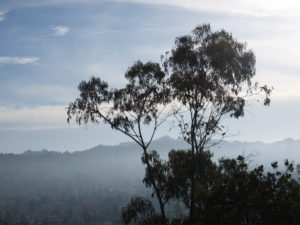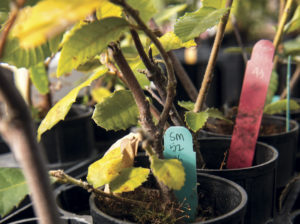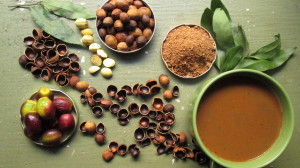Just when the skies gray and the cold rains begin to fall in the Bay Area, legions of tiny fungi start to grow, bursting with color. The rain signals underground networks of white filaments, called mycelia, that it is time to reproduce.
The parrot mushroom (Gliophorus psittacinus) in particular loves the damp dark days of winter. It’s a flash of color amid redwood and bay forests if you can spot the tiny fruiting bodies. They often start out green and then mature to the orangish-pinkish yellow shown here. But they can also be bright yellow and red, and there’s a rare blue variety from Humboldt County, hence the name.
German mycologist Jacob Schaeffer described the parrot mushroom in 1774, but the species didn’t settle into its current genus Gliophorus until 2013. And it could be in for more changes, as scientists now believe with further study G. psittacinus may turn out to be a complex of more than one species.
The term “Gliophorus” is derived from the Greek words glia meaning “glue” and phoros meaning ”bearing.” G. psittacinus is slimy! With a viscid cap a mere 1 to 4 centimeters across, the parrot mushroom is common in the Bay Area, growing alone or in groups, in moist soil, moss, or humus, from late fall to early winter through spring. It is odorless and, while not toxic, not particularly tasty either.
Anna Towers is an amateur mycologist and photographer who runs the blog thefriendlyfungus.com.





.jpg)